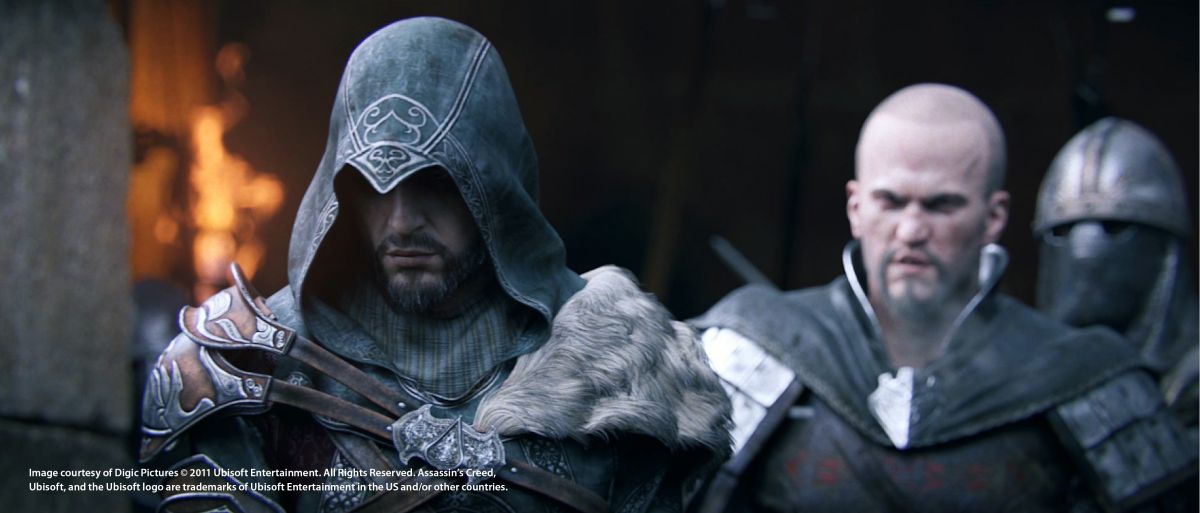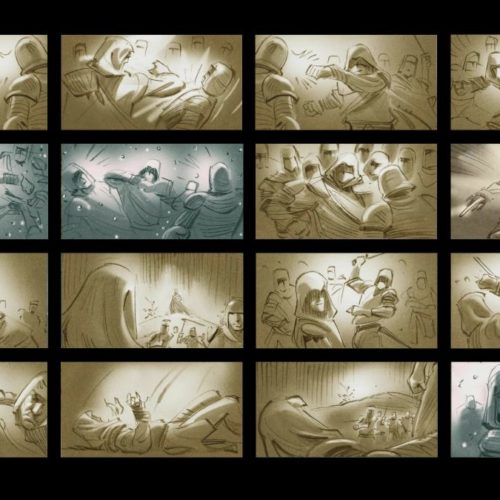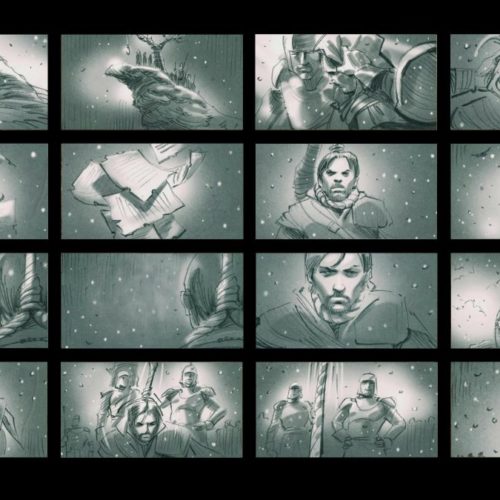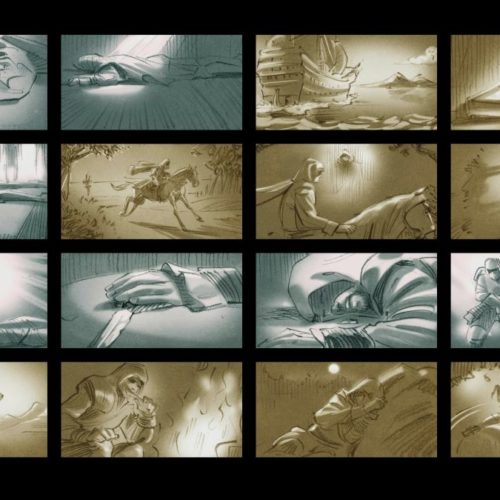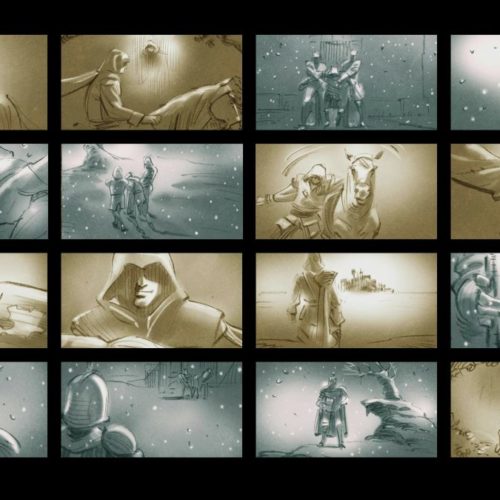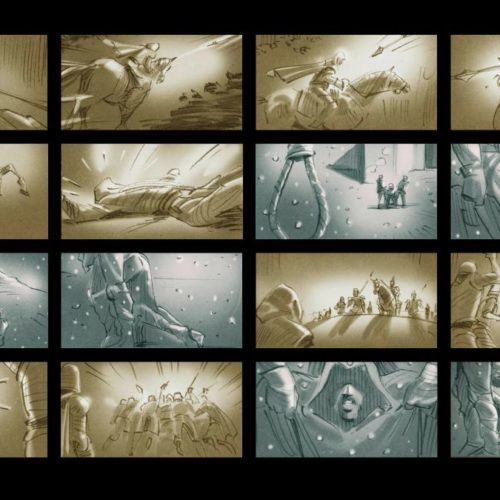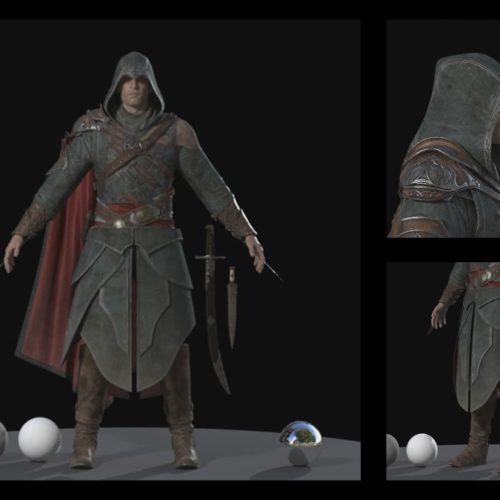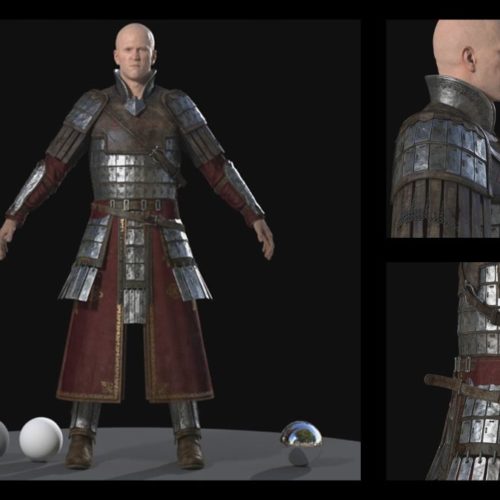Anniversary Prize “Assassin’s Creed: Revelations” Trailer
Wide-open mouths, goose bumps and eyes staring in astonishment; when a game cinematic manages to cause this reaction in everyone in the room – and not just die-hard fans of the game – then you can be pretty sure someone has done their job really well and created something truly amazing. Last year, our readers chose the “Assassin’s Creed: Revelations” Trailer created by Digic Pictures for the best animago contribution from 20 years.
Back then in 2011, when the official E3 trailer for “Assassin’s Creed: Revelations” was shown on the big screen at the animago AWARD ceremony in the fx.Center in Potsdam-Babelsberg, where it would go on to win the trophy for “Best Post-Production”, it immediately enthralled everyone present with its epic and amazing look and feel, perfectly underlined by the Woodkid song “Iron.” And even five years later, the cinematic continues to have the same effect on people; which means that it comes as no surprise that our online audience voted it their favourite contribution to the animago AWARD in its 20-year history.
The trailer celebrated its premiere in June 2011 at the Electronic Entertainment Expo, or E3 for short, one of the most popular and important tradeshows for computer games. The game itself was released in November for PC, Playstation 3 and Xbox 360. Before creating the trailer for “Revelations”, which formed part of Ubisoft’s famous “Assassin’s Creed” game series, the Hungarian team at Digic Pictures had already proved its mettle by making the cinematics for “Assassin’s Creed II” and “Assassin’s Creed: Brotherhood”. “Assassin’s Creed: Revelations” was the fourth game in the series and the successor to the “Brotherhood”. It was also the last in the Ezio trilogy. In this instalment, the hero Ezio sets out for Constantinople, today’s Istanbul, to protect the Ottoman Empire from the Templars.
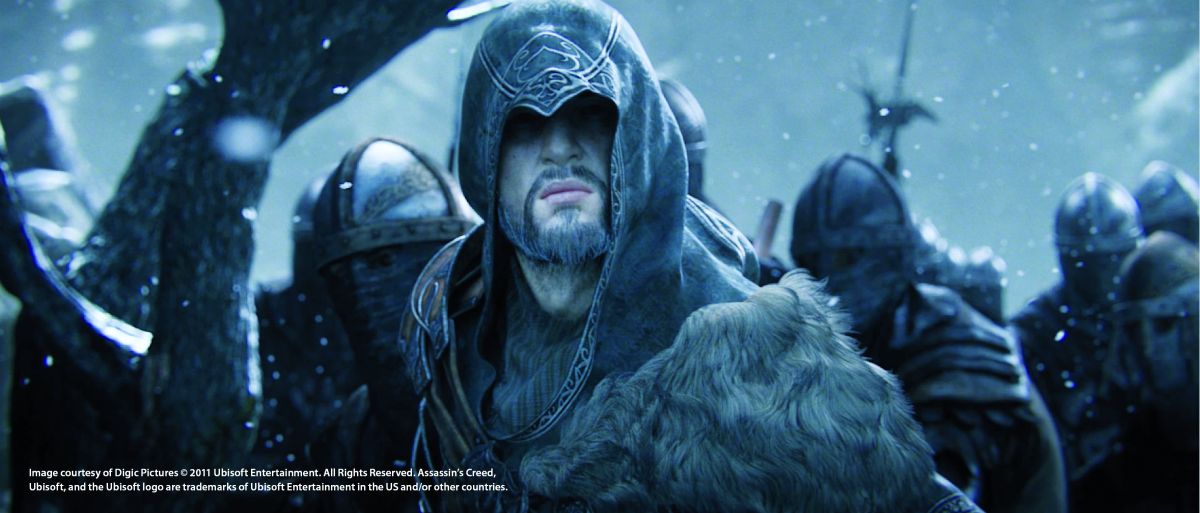
Duration & Team Size
Here’s a point of reference to demonstrate how much effort goes into a cinematic like this: for the production of 15 to 20 minutes of high-quality animation material, Digic has to work for roughly one full year. However, in the case of this project, the 80-member team had a total of only 4 months available to them, with some of the artists even having to work simultaneously on other projects.
High Expectations
Faced with the task of creating a trailer that captured the essence of the story and mood of the game, it was a big advantage that many of Digic’s employees were die-hard fans of the series. The Digic team also had several preliminary discussions with Ubisoft which allowed them to get a detailed impression of what the company wanted to be communicated in the trailer and also, of course, what it didn’t want to be shown. Indeed, the idea was not to boost interest in the game merely by showcasing some images; instead, the cinematic was designed to make AC fans crave to play the latest edition of the series as soon as possible. And in order to achieve that goal, each detail in the trailer had to fit perfectly.
Pictures of the storyboard for the trailer:
The narrative universe of the assassins is enormously complex and comprises 9 core games flanked by countless spin-offs, short films, comics and books. Ubisoft Montreal places tremendous value on historical accuracy in the development of “Assassin’s Creed”, and the game’s story is linked to a fictitious alternative history. And this is why the game developers provided the animation studio with lots of background information and reference material. They also made it clear what their expectations were with regard to storyline and design. Thus Digic was able to rely on a number of sets, assets and characters in their efforts to create the desired look. On the one hand, this facilitated the process, but on the other hand, it also made it more difficult, seeing as there was already an existing “game reality”. Locations, characters, their general movements and especially their way of engaging in battle – all of these had to look like the elements contained in the game.
Ubisoft left the final integration of the story into the film completely up to Digic. They also did the same with regard to those parts of the narrative that were not well-defined yet. This meant that the team at Digic was able to incorporate many of their own ideas and funnel their own creative input into the project.
Castle ruins and time-warp effects
The 1986 movie “The Name of the Rose” starring Sean Connery was the inspiration and visual orientation for the basic mood of the cinematic set in the gloomy Middle Ages. The castle ruin, which acts as the focal point for the action in the trailer, already figured in the first AC game as both a key setting and headquarters of the assassins’ order. In the battle scenes in front of the castle, where Ezio bravely resists his enemies, the time-warp effects are what impress us the most.
These posed a special challenge to the team during the making of the cinematic, first and foremost for technical reasons, seeing as the shots feature several characters and a wide variety of simulated elements. The highly convincing animation work done on the CG characters is another of the trailer’s stunning characteristics. For the battle scenes, the Digic team filmed the movements of professional martial artists in their own “Digic Motion” studio, which was equipped with a Vicon T160 motion-capture system.
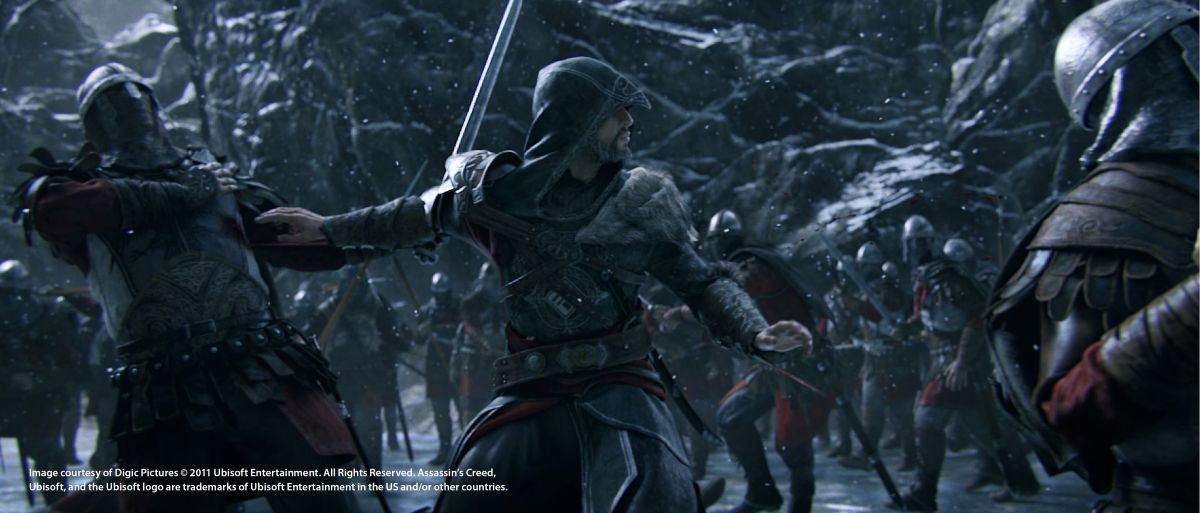
Software
The heart of the Digic’s pipeline is its proprietary production management software dProject, which runs in a task-based manner and also serves as a communication tool. Each member of the team uses this tool, so it prevents the delays associated with organisational chaos – which is an indispensable advantage for such an extensive and demanding project like a game cinematic.
Maya was the main tool used for the ACR trailer, and Digic continues to count on the Autodesk software for its cinematics to this day. It was used for the animation and the hard-surface modelling as well; and beyond that, it also served as a technical framework into which a number of Digic’s self-developed items were hooked up. The Hungarian team prefers to use Maya for large-scale productions in particular because of the tool’s robustness. The cloth simulation was made using SyFlex. Further tool assistants used in asset creation were 3ds Max, ZBrush, Bodypaint and Photoshop, and the compositing was handled by Nuke. Since 2010, the team has depended on Arnold for their rendering; prior to that, Mental Ray and RenderMan were the engines of choice. For the “Brotherhood” trailer they used Arnold for the first time, albeit still in combination with Mental Ray. For the ACR trailer, the render process relied entirely on Arnold.
Assassin’s Creed in the cinema
After a couple of delays, the film adaptation of the “Assassin’s Creed” story starring Michael Fassbender started December 2016 in cinemas. Unfortunately, the film version disappointed all along. Although it was tried to show partially the optics of the game trailer and the game itself, the story and entertainment factor could not convince. Worldwide, the film grossing was 240 million, which covered the production costs of 125 million. Originally, the series was planned as a trilogy, but it remains questionable whether that is still the case. So: We better watch again the sensational game trailers or play the game series!
(Mirja Fürst)
Credits „Assassin’s Creed: Revelations“ Trailer: Animation Studio: Digic Pictures – Game Developer: Ubisoft Montréal –Country: Hungary
The two other nominees for the Anniversary Prize were:
The Present
School: Filmakademie Baden-Württemberg – Director, Animation: Jacob Frey – Character Design: Max Lang – LookDev: Bin-Han To – Lighting/Rendering: Markus Kranzler – Character Modeling: Anja Wacker – Rigging: Polina Bambi, Pascal Floerks, Hanna Binswanger – Texture Lead: Natalia Alencar – Compositing: Falko Paeper, Matthias Bäuerle – Producer: Anna Matacz – Sound: Marco Manzo, Tobias Bürger, Sarah Kämmerer – Country: Germany – Entstehungsjahr: 2014
Software: Maya, Mari, Yeti Fur, RenderMan, Nuke, Hiero
Loom
Animation Studio: Polynoid – School: Filmakademie Baden-Württemberg – Directors: Jan Bitzer, Ilija Brunck, Csaba Letay – TD: Fabian „Pit“ Pross – Producer: Regina Welker – Sound: Joel Corelitz/Waveplant – Country: Germany – Entstehungsjahr: 2010
Software: Softimage, Fusion
Last year Vogelsänger sponsored this special category, which was introduced to celebrate the 20th animago anniversary. In 2017, the team will again support us with the Fotobox offer for the visitors. Read more about Vogelsänger here.

